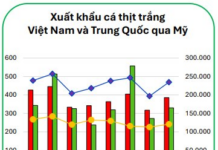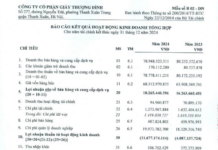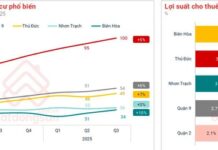Distinct Regional Characteristics
Speaking at the seminar “From Ho Chi Minh City to the Satellite Cities – New Opportunities for Real Estate” organized by CafeLand on August 22, Mr. Vo Huynh Tuan Kiet, Director of Residential Marketing, CBRE Vietnam, shared that after the merger, Ho Chi Minh City formed three major growth poles. Each pole offers distinctive real estate products, catering to the diverse needs of the market.
Specifically, the Ho Chi Minh City area boasts luxury and high-end apartments concentrated in the old District 1, District 3, and the new Thu Thiem Urban Area. These properties have become iconic, brand-name assets commanding the highest prices in the region. In parallel, integrated real estate developments that combine Grade A offices, shopping malls, 5-star hotels, and serviced apartments are identified for robust growth, with Thu Thiem as the focal point.
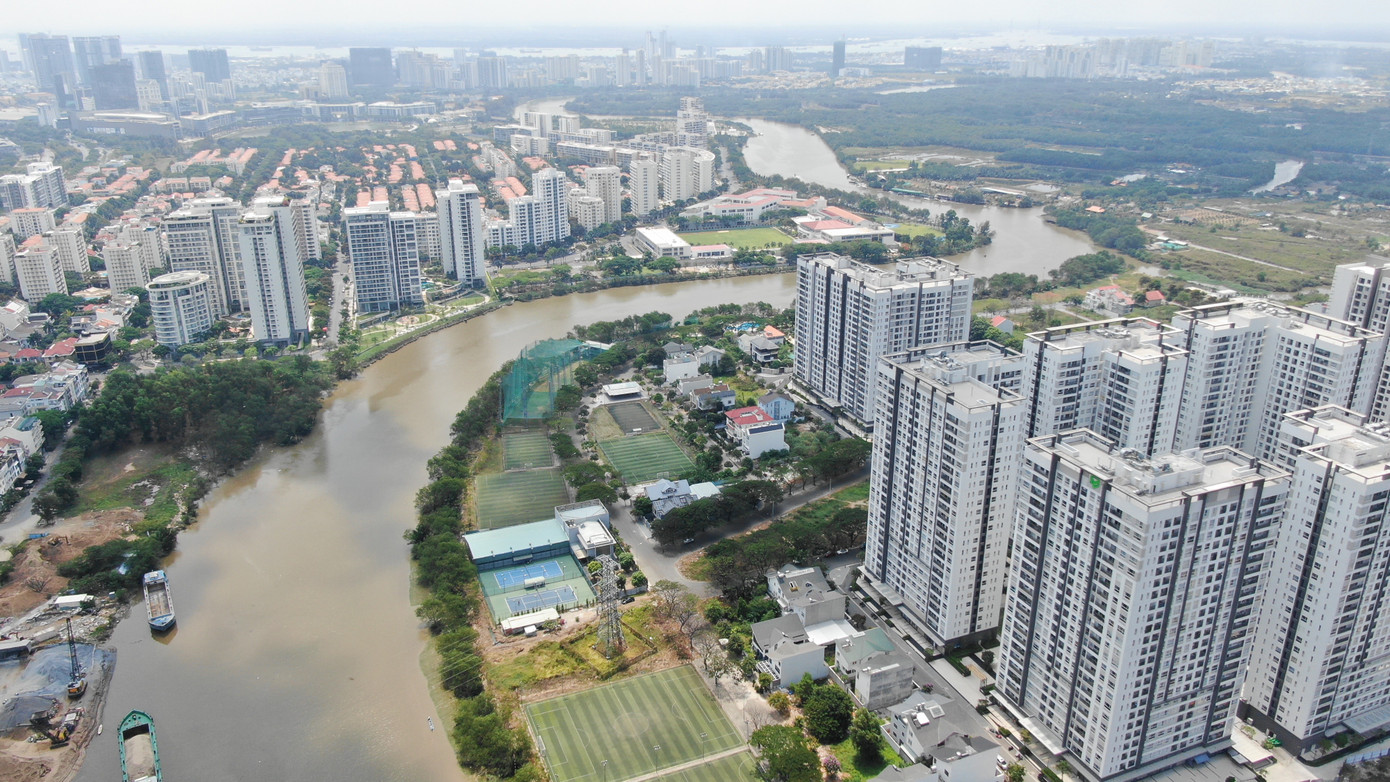
The Ho Chi Minh City market is positioned in the upscale segment, catering primarily to the upper class, senior experts, and international clientele.
Additionally, detached houses in Ho Chi Minh City are considered a scarce supply with very high values, mostly found in gated communities. With a high population and income level, the Ho Chi Minh City market caters to the upper class, senior experts, and international clientele, positioning itself in the high-end segment.
Meanwhile, the Binh Duong area continues to assert its position as an industrial center with three key product lines. These include mid-range apartments serving millions of workers, engineers, and experts in Di An, Thuan An, and Thu Dau Mot. Industrial real estate comprises workshops, warehouses, and new-generation industrial parks integrating advanced technology and logistics. The third product line is social housing for workers. This market offers attractive rental yields and sustainable growth potential due to industrialization.
In contrast, the Ba Ria – Vung Tau region stands out with its “2-in-1” advantage of tourism and industrial seaports. The Ho Tram – Xuyen Moc axis has become the “capital of upscale resorts” with condotels, beach villas, and shophouses. The second home segment caters to the ultra-rich and weekend vacation needs. Additionally, logistics and industrial seaport real estate are linked to the Cai Mep – Thi Vai, Phu My deep-water port cluster, benefiting from strategic infrastructure projects such as the Long Thanh airport and the Bien Hoa – Vung Tau expressway.
The Long An area (Tay Ninh province), bordering Ho Chi Minh City, has also emerged with the fastest-growing apartment prices in the southern provinces. Many large-scale projects have established new price levels. Regarding future supply, if we consider only Ho Chi Minh City, it is quite limited, but including the satellite cities, it is expected to reach 36,000 products in the next three years.
Where are the Price Increases?
According to Mr. Kiet, infrastructure connectivity is the decisive factor in the development trend of the expanded urban area and also promotes the population dispersal process. After the merger, the new Ho Chi Minh City is not only the country’s largest economic center but also reshapes the regional real estate price map. The data shows a significant shift from the central core to satellite cities like Binh Duong, Dong Nai, Ba Ria – Vung Tau, and Long An.
Specifically, primary prices in the outskirts have set new levels. In Ho Chi Minh City, the average primary apartment price has increased by 29% per year, reflecting high demand and scarce land supply.
Binh Duong’s apartment prices rose by 14% per year, benefiting from industrial infrastructure and the housing needs of the labor force. Dong Nai also experienced a 15% annual increase, driven by the Long Thanh airport and expressways. Notably, Long An broke through with a 90% annual increase, becoming the new hotspot for price growth.
“In the coming period, about 80% of new supply will come from satellite areas instead of the inner city, as in the past. This reflects the growing appeal of the satellite market as regional linkage infrastructure improves,” said Mr. Kiet.
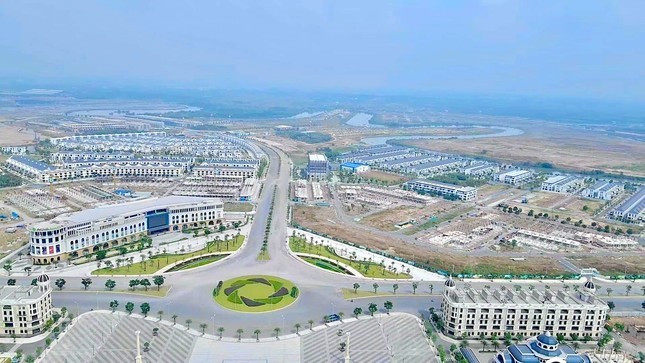
Dong Nai apartments also increased by 15% per year, driven by the Long Thanh airport and expressways.
Accordingly, four critical factors are expected to shape the Ho Chi Minh City market in the coming period: the new super-city planning of Ho Chi Minh City, the expansion of growth poles, the transport system & TOD (Transit-Oriented Development) such as metro, highways, and inter-regional connections, the constantly updated land price frame reflecting market prices, and the new legal framework and real estate tax policy, expected to tighten but be more transparent.
“The merger has created a strong synergy, especially in urban development capabilities. The land fund issue has been resolved, opening up new opportunities for businesses. Previously, most projects encountered legal obstacles, causing delays in implementation. With the expanded land fund, investors will have more choices of locations, facilitating the formation of new projects,” said Mr. Kiet.
The Director of Residential Marketing at CBRE Vietnam also emphasized the imperative to address the housing development needs. Investors should focus on segments where there is actual market demand rather than chasing short-term profits. This is a long-term strategy that requires selecting the right product types to meet genuine housing needs.
Mr. Kiet believes that while the high-end segment offers high-profit margins, it only serves a small market. In contrast, the vast majority of people still need affordable housing. After the merger, more opportunities have emerged for businesses, such as easier land acquisition, upgraded connectivity infrastructure, and a synergistic boost for the market.
“Viglacera Considers Divesting from its Management Arm that Operates Gelex Tower, Capital Place, and Thang Long Number One.”
In its real estate restructuring plan, Viglacera contemplates capital withdrawal from two key entities: CTCP Tu Van Viglacera and CTCP Visaho. These companies are prominent players in the management and operation of prestigious office buildings and apartment complexes.
Expanding Horizons: Why $40 Billion Isn’t Enough for Ho Chi Minh City’s Metro Network
“Ho Chi Minh City’s expansion plans are ambitious, with a proposed metro network expansion to over 1,000 km. This massive undertaking presents significant challenges regarding funding, human resources, and management models, requiring careful consideration and innovative solutions to ensure successful implementation.”
“Vinhomes Divests Entire Stake in Its Over-5,000-Billion-Dong Subsidiary in Hai Phong”
On August 20, Vinhomes’ market capitalization surpassed the VND 400,000 billion mark for the first time. This remarkable milestone underscores the company’s strong performance and solid position in the market. With a diverse portfolio of innovative and sustainable developments, Vinhomes has established itself as a leading real estate developer in Vietnam, capturing the attention of investors and homebuyers alike.
The Scenic Coastal Route: Connecting Ho Chi Minh City and Lam Dong Province
Investing over 7 trillion VND, the nearly 77-km-long coastal road connecting Ho Chi Minh City to Son My – Lam Dong is witnessing the completion of several key sections.
The Ultimate Showdown: Unveiling the An Phu Interchange Project
Facing the risk of delays that could extend until the end of 2026, the People’s Committee of Ho Chi Minh City has instructed the investor of the An Phu intersection project to complete and commission the construction before December 31 this year, as per the original schedule, with a resolute commitment to avoiding any further postponements.

















